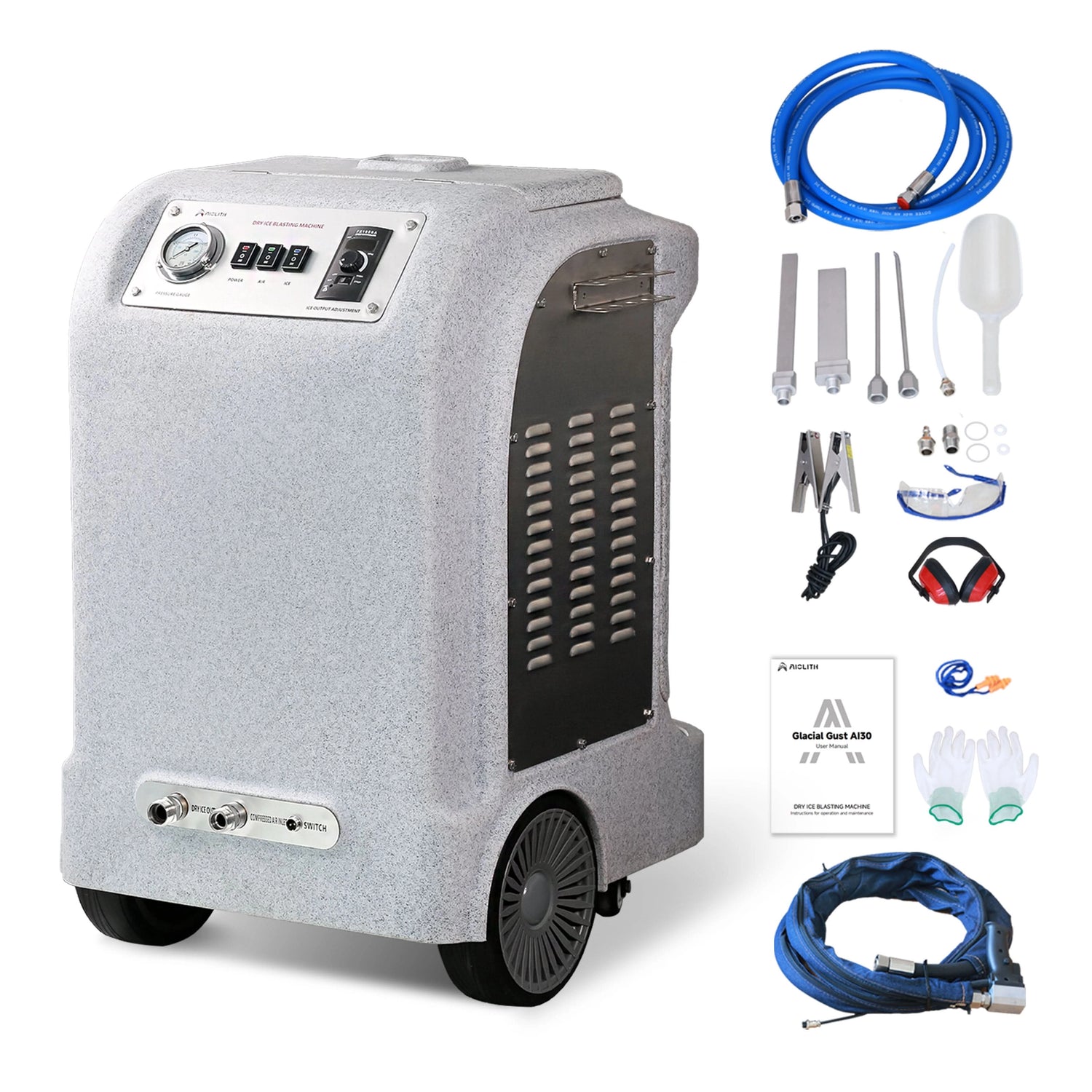Is Scrubbing Floors Better Than Mopping? 9 Important Truths Every Facility Manager Must Know Before Choosing
Share
Why Businesses Question Mopping vs. Scrubbing
Facility managers and cleaning professionals often face the same dilemma: Is scrubbing floors better than mopping? On the surface, mopping appears cheaper and simpler. But in reality, traditional mopping often spreads dirt rather than removing it, while scrubbing delivers a deeper, more hygienic clean.
A study published in the American Journal of Infection Control (Rutala & Weber, 2019) highlights that conventional mopping can leave behind microbial contamination, especially in healthcare environments, making scrubbing a safer and more effective option for critical facilities.
The Limitations of Traditional Mopping
While mopping is common, it comes with several pain points:
- Spreads bacteria when dirty water is reused.
- Requires significant labor time for large spaces.
- Leaves floors wet, creating slip hazards.
- Inefficient for heavy soil or grease buildup.
For small areas or quick cleanups, mopping still works. But in high-traffic commercial settings, its drawbacks quickly outweigh its benefits.
Why Floor Scrubbing Delivers Superior Results
Floor scrubbing machines use rotating brushes or pads, cleaning solution, and powerful suction to remove soil and leave floors dry in a single pass. The benefits include:
- Deep cleaning that removes embedded dirt and grease.
- Reduced drying times, minimizing slip-and-fall accidents.
- Consistent cleaning quality across large facilities.
- Lower long-term labor costs compared to manual mopping.
According to Journal of Occupational and Environmental Hygiene (Anderson & Meinke, 2021), mechanized scrubbing improves hygiene outcomes and reduces cleaning-related injuries compared to manual methods.
Comparing Scrubbing vs. Mopping: Which is Better?
| Criteria | Mopping | Floor Scrubbing |
|---|---|---|
| Cleaning Depth | Surface-level, often spreads dirt | Deep cleaning, removes bacteria and debris |
| Labor Intensity | High, time-consuming for large spaces | Low, machines handle heavy work |
| Drying Time | Long, floors remain wet and slippery | Short, floors dry almost instantly |
| Cost Efficiency | Lower upfront, higher long-term labor costs | Higher upfront, long-term savings |
| Best For | Small offices, homes, quick cleanups | Hospitals, warehouses, retail, high-traffic areas |
| Aiolith Floor Scrubbers | N/A | Advanced technology for versatile applications |
Aiolith Floor Scrubbers: The Smart Alternative to Mopping
Businesses choosing Aiolith commercial floor scrubbers experience significant advantages:
- Debris collection systems reduce the need for pre-sweeping.
- Adjustable brush and pad settings for different surfaces.
- Powerful suction leaves floors safe and dry instantly.
- Durable design ensures longevity, reducing replacement costs.
By investing in Aiolith, facility managers address the pain points of mopping—labor costs, safety risks, and inconsistent results—while gaining a machine designed for modern cleaning challenges.
Cost Analysis: Mopping vs. Scrubbing
| Cost Factor | Mopping | Scrubbing with Aiolith |
|---|---|---|
| Initial Equipment Cost | $30–$200 (buckets, mops) | $5,000–$15,000 (machine) |
| Labor Cost (Annual) | High, due to slow process | Lower, machines clean faster |
| Consumables | Mop heads, detergents | Pads/brushes, cleaning solution |
| Average ROI Timeline | N/A | 18–24 months |
While mopping appears cheaper upfront, scrubbing becomes more cost-effective for any facility larger than a small office.
Best Use Cases for Scrubbing vs. Mopping
-
Mopping Works Best For:
Small spill cleanups.
Residential areas.
Rooms under 50 m².
-
Scrubbing Works Best For:
Hospitals and clinics where hygiene is critical.
Warehouses and factories with heavy soil.
Shopping malls and airports with high traffic.
Schools and universities maintaining large spaces.
Environmental and Safety Benefits of Scrubbing
Scrubbing is not only more effective but also eco-friendly and safer:
- Uses less water and detergent per square meter.
- Reduces slip-and-fall accidents with faster drying.
- Extends floor lifespan by preventing buildup and abrasive wear.
The European Cleaning Journal (HSE, 2020) reports that mechanized floor cleaning reduces slip incidents significantly, making it the preferred choice in compliance-driven industries.
FAQ: Is Scrubbing Floors Better Than Mopping?
Q1: Is scrubbing always better than mopping?
A: For large commercial areas, yes. For small or low-traffic spaces, mopping may still suffice.
Q2: Do Aiolith scrubbers eliminate the need for mopping entirely?
A: In most cases, yes. However, small spot-cleaning may still be handled with mops.
Q3: Are scrubbers safe for delicate floors?
A: Yes, Aiolith machines allow brush and pad customization for different surfaces.
Q4: How much maintenance do Aiolith scrubbers require?
A: Routine care such as cleaning squeegees and replacing pads/brushes ensures long service life.
Q5: Can scrubbing reduce cleaning costs?
A: Absolutely. Scrubbers reduce labor time, water use, and cleaning chemical consumption.
Conclusion: Scrubbing Outperforms Mopping in Commercial Settings
So, is scrubbing floors better than mopping? The answer is clear: scrubbing is superior in terms of hygiene, efficiency, and safety. While mopping has its place in small-scale cleaning, it cannot match the long-term benefits of professional scrubbing.
With Aiolith floor scrubbers, businesses get deep-cleaning performance, safer floors, and long-term savings—solving the pain points that traditional mopping fails to address.
References
Rutala, W. A., & Weber, D. J. (2019). Best practices for environmental cleaning in healthcare facilities. American Journal of Infection Control. Read here.
Anderson, J., & Meinke, H. (2021). Occupational hygiene and floor maintenance practices in commercial settings. Journal of Occupational and Environmental Hygiene, 18(6), 329–339. Read here.
Health and Safety Executive (HSE). (2020). Preventing slips and trips at work. Available here.

